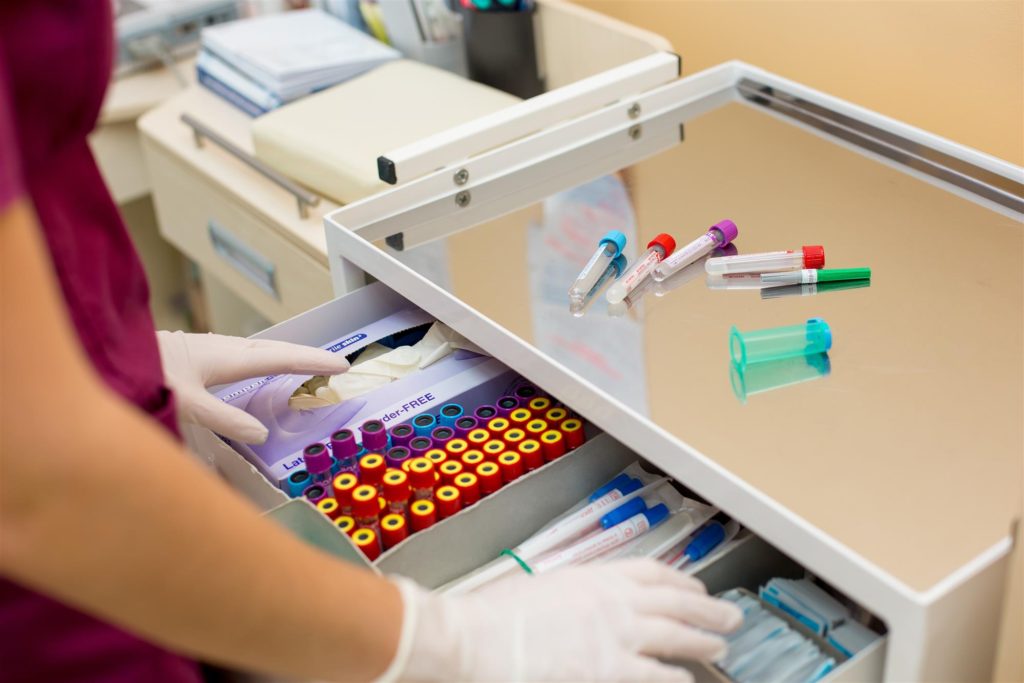ABC Training Center is pleased to have been awarded the Best Phlebotomy Program in New York by phlebotomytrainingspot.com for 2014 and 2015. This award identifies the top phlebotomy schools in each state and is based upon program structure, school reputation, open poll voting, and the school’s accreditation. Out of all the schools in New York, and the thousands of phlebotomy programs in the United States, our school is one of the best.
What Is Phlebotomy?
Phlebotomy, also referred to as venipuncture, is a specialized medical career where the technician works as a healthcare assistant to collect blood samples from patients. This career requires a high school diploma and sufficient training through a qualified career training school.
Some phlebotomists transport collected samples for testing from the collection site to the laboratory for processing. They may also perform the testing of the collected samples under the supervision of a laboratory manager or more experienced technicians. Furthermore, they may also be required to collect urine samples and perform urinalysis tests.
All phlebotomists, regardless of their job responsibilities, are required to be able to record and log sample collection information into patients’ medical records. In addition, after performing tests, the phlebotomy technician may be responsible for reporting the results to the patient’s physician.

Venipuncture Tips and Tricks
Drawing blood samples from patients might seem like it is not that difficult. However, you need to remember you are sticking a sharp needle through the vein wall and must carefully align it inside the vein. If not performed correctly, it can create much pain and discomfort for patients.
The following tips and tricks will help you become more proficient in venipuncture, whether you are getting ready to enroll, are still working on your phlebotomy certification in NYC at our medical training school, or are already working in a clinical setting.
- Confirm the identity of the patient. You want to make sure you are collecting the right blood samples from the right patient. In cases where a patient in unconscious or nonresponsive, it is acceptable to verify their identity from their hospital bracelet, their nurse, or their doctor.
- Take steps to minimize the risks of personal injuries. Collecting blood samples can be risky for the phlebotomy technician. They must take care to not stick themselves with the needle after it has been exposed to a patient’s blood.
- Prepare and label all sample tubes prior to collection. Get into the habit of prepping and labeling all the specific collection tubes before drawing blood. This will allow you to confirm you have the right tubes for the requested tests and will prevent mislabeling of samples.

- Take your time when collecting samples. Some technicians feel they have to rush through the process because they might have numerous samples to collect during their shift. However, it is much better to take your time, as this will help you avoid making mistakes.
- Interact with patients while prepping and collecting samples. Talking to patients in a friendly and calm manner will help ease their anxieties about having blood drawn. It also helps to find out if they have an issue with needles or the sight of blood, which some people do. If so, you can direct them to close their eyes or turn their head away while you draw blood.
- After collecting samples, confirm the patient feels fine. Some people might get lightheaded or dizzy, so you want to make sure they remain sitting until the feeling passes.
- Attempt to collect blood samples from medial veins. These veins are the ones that are closer to the surface of the skin, and which are stationary and easier to puncture while being less painful for patients.

- Puncture the vein and skin between a 15- and 30-degree angle. Bringing the needle in at a low angle is less painful for the patient and helps reduce the risks of puncturing all the way through the veins and hitting arteries, nerves, tendons, and muscles.
- Invert collection tubes that contain anticoagulants, after collection, to prevent clotting. If you do not invert the tube, the blood can clot, resulting in a rejected test sample and requiring you to have to draw more blood from the patient.
- Know when to ask for help. Everyone has an off day or a patient who has veins which are difficult to puncture. A good rule of thumb to use is, after two attempts, stop and ask someone else for assistance. Not only will your patient appreciate this, but it also demonstrates your level of professionalism to them.
For more information about the best phlebotomy training in NYC and New York at our medical career training school, please feel free to contact us at (718) 618-5589 today!
Source